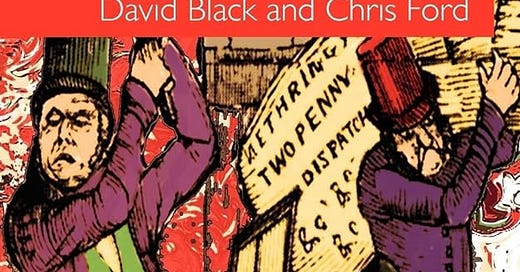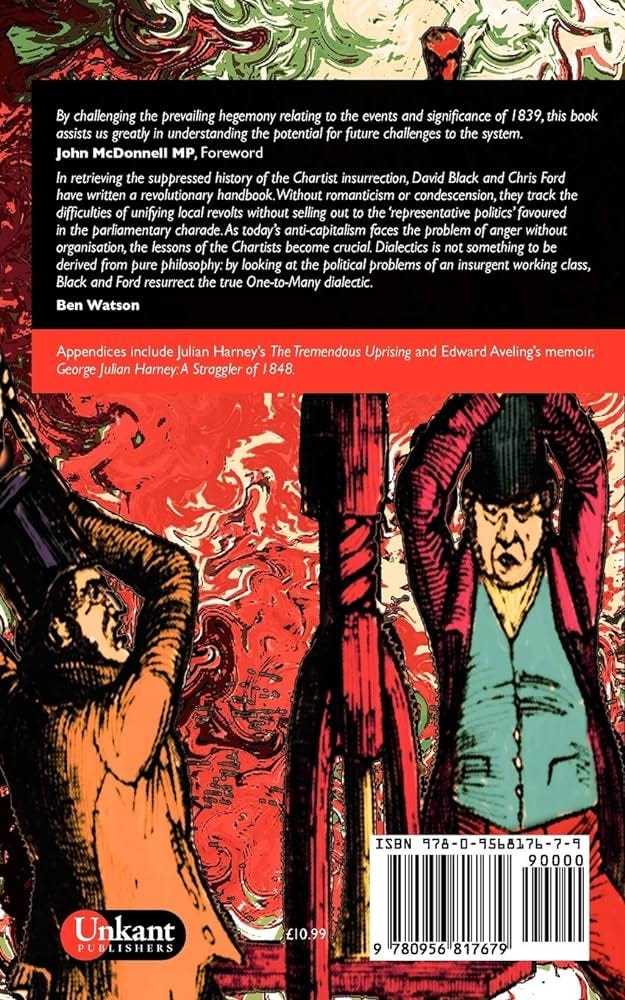When did Britain come closest to Revolution? According to historian Katrina Navickas:
‘The year most likely to result in a revolutionary moment was 1839. Bread prices were at their highest levels since 1819. Peaceful demonstrations built up to the presentation to Parliament of the first Chartist National Petition in May, signed by over 1.2 million people. Even in more moderate centres, such as Birmingham, there was growing support for a National Convention to take ‘ulterior measures’ if the petition was rejected. The South Wales valleys fostered the greatest potential for revolution… On 3 November 7,000 armed men gathered in three contingents at Pontypool, Blackwood and Ebbw Vale to march on Newport… The 1839 rising failed, but it was a close call. The Rural (county) Constabulary legislation had only just been enacted, so police forces were thin on the ground. Just 60 soldiers were stationed at Newport. Neither the police nor the military were as practised in crowd dispersal as they would become by 1848.’ History Today, 1 January 2022
The Chartist National Convention of 1839 discussed various means for furthering the struggle for democracy, one of which was the ‘old constitutional right’ of ‘free men’ to bear arms ‘to defend the laws and constitutional privileges their ancestors bequeathed to them’. Their reasoning was that the Peterloo Massacre of 1819 wouldn’t have happened if the pro-democracy demonstrators had been armed. Of course 200 years later, peaceful protestors are no longer cut to pieces by sabre-wielding gentry-on- horseback. Also, Britain does not a gun-culture. For all intents and purposes, fire-arms struggle can be ruled out.
Not so, other ulterior measures. The Chartists discussed and sometimes implemented several measures that today seem exemplary, inspiring and perhaps worth rethinking for our own time: withdrawal of money from ‘hostile’ banks; a month-long general strike; torchlight processions; refusal to pay rents, rates, and taxes; boycott of anti-Chartist newspapers; protection of persecuted activists; secret organisation of prohibited political activities, contestation of public spaces, and more. In 1839, the Chartist masses were fighting for democratic representation as a means to address economic and social grievances. Today it is evident that means and ends cannot be separated.
These issues are the subject of our book: 1839: The Chartist Insurrection by David Black and Chris Ford (with a foreword by John McDonnell MP)
Over the next month, I’ll be posting a few extracts from the book. Unkant Publishing went out of business in 2015, leaving the book ‘homeless’ and out-of-print (although it can still be obtained from some online booksellers). One of the aims of this blog is to help the book find a new publisher.






Have you tried Verso publishing?